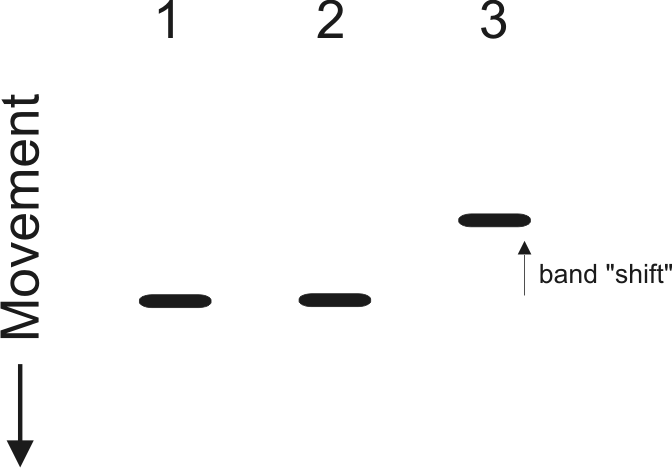-

Gel Electrophoresis
Gel electrophoresis is a widely used technique in molecular biology for separating and analyzing DNA, RNA, and proteins. It plays a crucial role in various applications such as DNA analysis, protein characterization, and clinical diagnostics. This study note provides an in-depth understanding of the principles, procedure, and applications of gel electrophoresis, making it a valuable…
-

ChIP (Chromatin Immunoprecipitation)
ChIP (Chromatin Immunoprecipitation) is a powerful molecular biology technique used to study protein-DNA interactions in cells. This article explores the principles, procedure, applications, and limitations of ChIP, providing insights into its significance in gene expression regulation and chromatin structure. Discover how ChIP has revolutionized research in genetics, epigenetics, and cancer research, while also exploring newer…
-

RFLP (Restriction Fragment Length Polymorphism)
The excerpt introduces RFLP, a molecular biology method for detecting DNA sequence variations. It explains the principle of restriction enzymes cutting specific DNA sequences and generating restriction fragments. The procedure involves DNA isolation, digestion, gel electrophoresis, and hybridization with labeled probes. RFLP’s applications span genetics, forensic science, and medical diagnostics. Despite its replacement by newer…
-

Restriction Endonucleases
Restriction endonucleases, the DNA-cutting enzymes, are indispensable in molecular biology research. Classified into four types based on recognition sites, Type II enzymes stand out as the most widely used. They cleave DNA at specific sequences, generating fragments with blunt or sticky ends. Despite their complexity, Type I and III enzymes have limited use due to…
-

Central Dogma of Molecular Biology
The central dogma of molecular biology is a fundamental principle that explains the flow of genetic information in living organisms. It states that genetic information flows from DNA to RNA to proteins, but not the reverse. This principle has been a fundamental concept in the field of molecular biology and has helped to understand many…
-

Knock Out and Knock Down Gene
The text discusses the molecular basis of knock out and knock down gene mechanisms, which are powerful tools for studying gene function. It explains how these mechanisms work, the methods used to generate them, and their advantages and disadvantages. The downstream effects of gene disruption can vary depending on the gene and organism being studied,…
-

RNA Interference (RNAi)
The article provides an introduction to RNA interference (RNAi), a process by which the expression of specific genes is regulated at the post-transcriptional level. It explains the biochemistry of siRNA and shRNA, the mechanism of action, and the downstream effects of RNAi. The article also discusses the role of RNAi in cancer treatment and defense…
-

DNA Footprinting
The DNA footprinting technique is used to study the interactions between DNA and proteins. This allows researchers to identify which regions of DNA are bound by specific proteins and how they interact with DNA. DNA footprinting has various methods like chemical, thermal, and electrophoretic mobility shift assays, which are used to map protein-DNA interactions, study…
-

Electrophoretic Mobility Shift Assay: EMSA
The text describes Electrophoretic Mobility Shift Assay (EMSA), a molecular biology technique used to study protein-DNA interactions. EMSA is based on the principle that proteins can bind to specific regions of DNA and alter its conformation, affecting the mobility of the DNA in an electric field. This technique is used to study transcription regulation, DNA…
-

Northern blotting
Northern blotting is a technique used in molecular biology and medical research to analyze and detect specific RNA sequences. It involves the separation of RNA by electrophoresis and detection through hybridization. This powerful method has applications in genetics, diagnostics, and environmental monitoring, providing valuable insights into diseases and genetic disorders. Discover more about the principles,…
-

Southern blotting
Southern blotting is a powerful technique used in molecular biology and genetics to analyze and identify specific DNA sequences. It involves the separation of DNA by electrophoresis and detection by hybridization. With applications in medical research, genetic engineering, diagnostics, and environmental monitoring, Southern blotting plays a crucial role in understanding DNA-related phenomena. Discover the principles,…
-

Western blotting
Discover the powerful technique of Western blotting, used in biochemistry, molecular biology, and medical research. Explore its principle of protein separation and antibody binding for protein analysis and identification. Uncover its wide-ranging applications in disease research, biotechnology, diagnostics, quality control, and environmental monitoring. Embrace Western blotting as a crucial tool for advancing scientific understanding and…
Categories
- Anatomy (9)
- Animal Form and Functions (38)
- Animal Physiology (65)
- Biochemistry (33)
- Biophysics (25)
- Biotechnology (52)
- Botany (42)
- Plant morphology (6)
- Plant Physiology (26)
- Cell Biology (107)
- Cell Cycle (14)
- Cell Signaling (21)
- Chemistry (9)
- Developmental Biology (36)
- Fertilization (13)
- Ecology (5)
- Embryology (17)
- Endocrinology (10)
- Environmental biology (3)
- Genetics (59)
- DNA (27)
- Inheritance (13)
- Histology (3)
- Hormone (3)
- Immunology (29)
- life science (76)
- Material science (8)
- Microbiology (18)
- Virus (8)
- Microscopy (18)
- Molecular Biology (113)
- parasitology (6)
- Physics (3)
- Physiology (11)
- Plant biology (26)
- Uncategorized (7)
- Zoology (112)
- Classification (6)
- Invertebrate (7)




